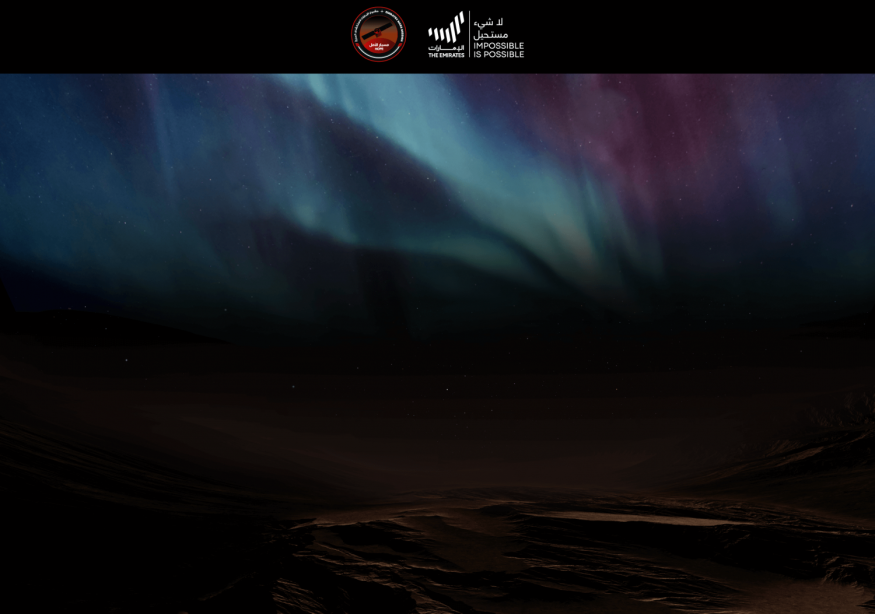The United Arab Emirates' Hope spacecraft, which has been orbiting Mars since February, has captured unusual photographs of these atmospheric dancing lights, known as discrete auroras.
The photos were released by mission officials on Wednesday.
Sarah Al Amiri, UAE minister of state for advanced technology, told Bloomberg TV that the recent observations have "opened a new domain for this mission". The latest discovery, Al Amiri said, boosted the potential outcome when it comes to research.
These three images of atomic oxygen emission at a wavelength of 103.4 nm from the planet Mars were obtained by the Emirates Mars Ultraviolet Spectrometer instrument on 22 April, 23 April, and 06 May 2021 respectively. pic.twitter.com/YDFOAOm4et
— Hope Mars Mission (@HopeMarsMission) June 30, 2021
Martian Auroras Challenging to Catch
Because the magnetic field orbiting the planet has gone chiefly out as molten iron in the interior cooled, the glows on Mars are not limited to the top and bottom of the planet. However, areas of Mars' crust that hardened billions of years ago, when the planet had a worldwide magnetic field, retain some of that magnetism.
These auroras are challenging to catch, according to Justin Deighan, a planetary scientist at the University of Colorado Laboratory for Atmospheric and Space Physics and deputy science lead for the Hope mission. As a result, seeing them very immediately with EMM was both exhilarating and unexpected.

"It's definitely something that was on our radar, so to speak, but just looking at our first set of nighttime data and saying, 'Hey, wait a second - is that? - it can't be - it is!' - that was a lot of fun," Deighan told Space.com.
Earth's auroras are known to be linked to the planet's global magnetic field. They are triggered by charged particles from the sun, according to scientists. However, the situation on Mars is a little different since scientists have discovered three different types of auroras.
One form of Martian aurora occurs only on the planet's daylit side, whereas the other two occur only at night. One of the nocturnal phenomena occurs only during exceptionally powerful solar storms, when the entire disk is illuminated. Like the one seen by Hope, the distinct aurora is not limited to periods of high solar activity. Instead, it can be found exclusively in select areas of Mars' nightside.
ALSO READ : Could Solar Explosions Spark Northern Lights in Several States This Total Lunar Eclipse?
The distinct aurora has been spotted by both the European Space Agency's Mars Express mission and NASA's MAVEN orbiter, but not very clearly. In comparison to Hope, those missions have orbited Mars closer to the surface, viewed less of the planet at any given time, and their instruments have not been as powerful.
And it turns out that discovering different auroras on Mars than on Earth makes sense, given the vast differences in magnetic conditions between the two planets.
Recent Discovery Could Stitch Together More About Martian Night Lights
Previous Mars orbiters have seen auroras. But The New York Times said Hope, with a high-altitude orbit ranging from 12,400 miles to 27,000 miles above the surface, can see the night side of Mars from a global perspective.
The significant science observations for the Hope mission, which entered orbit around Mars in February, did not include taking images of auroras. The mission's goal is to learn more about the dynamics of the Martian atmosphere near the surface, which affects how quickly the planet's atmosphere escapes into space.
Planetary scientists may piece together a more complete knowledge of Mars' night lights by combining Hope's aurora photos with MAVEN's particle observations.
RELATED ARTICLE : Aurora Borealis: Scientists Solved Final Mystery of the Origins of the Northern Lights
Check out more news and information on Space in Science Times.
© 2025 ScienceTimes.com All rights reserved. Do not reproduce without permission. The window to the world of Science Times.











